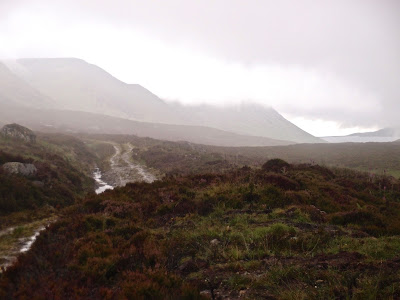 |
| A Life in Four Books latest edition |
The Edinburgh Festival has provided us with quite a few turnips in recent years - never trust reviews - and we have had no real urge to repeat our mistakes. This year we decided to see the Citizens Theatre group's interpretation of Alasdair Gray's magnus opus - 'Lanark - A Life in Four Books'. It had been stripped down and adapted into "A Life in Three Acts' but still lasted 4 hours. Given that my attention span for watching anything is limited to about 45 minutes, it was going to be either a marathon viewing or a big sleep. I managed both.
I had first read the book over thirty years ago when it was first published by Canongate and I was living in Glasgow at the nadir of its economic recession and excessive municipalisation. I knew the place references and could imagine the reasons for the Kafkaesque dark foreboding. I couldn't find my copy of the book, presumably, it had gone to a charity shop in one of the many purges of my book collection, but I managed to purchase and read William Boyd's introduction and the prologue in the latest edition of the book before attending the play. I'm not sure it helped as this was theatre at its most experimental attempting to interpret a book that defies description.
The performance included mixed media, chanting, disturbing obscenities and the occasional self-mocking. In his previous life, Lanark was Thaw who lusted after women, had a breakdown at Art School and spent months painting a religious mural on the roof of a church which is going to be knocked down for a new motorway. (Glasgow circa 1968) All of these events seem autobiographical apart from the fact that Alasdair Gray is still painting a church ceiling at the top of Byres Road - 'Oran Mor', a cultural centre that is under no threat of being demolished. I am still unsure whether I understand the book any better having seen the play.
 |
Alasdair Gray's Cowcadden's Streetscape
|
The most disturbing insight was the influence of 'the Institute' a dysfunctional executive body that decided who lived and who was sent to Unthank, a dystopian city that was the underclass to Provan where wealth and power subsumed morality. It is easy to see the parallels with the outcomes of neoliberalism that were evident during the Thatcher/Major ears and again as austerity is a regressive measure that is accelerating social exclusion. There are also echoes of how dysfunctionalism has been an undercurrent Labour leadership theatricals as Simon Jenkins' perceptive article on the demise of the Labour Party suggests. The control freaks of New Labour created an oligarchy rather than building on the real strength of the party, which resides in strong and capable regional political leaders.
"Who is really powerful in the British Labour party? Who wins votes, decides policies, commands budgets, doles out jobs? Who knows how to run something?
I tell you the answer.It is people such as Richard Leese, Nick Forbes, Judith Blake,Albert Bore, Julie Dore, Peter Soulsby, Jules Pipe and Robin Wales. You have probably never heard of them because you think important politics happens only in Westminster. The above are Labour leaders, half of them elected mayors, in Manchester, Newcastle, Leeds, Birmingham, Sheffield, Leicester, Hackney and Newham.
Of these, at least half would certainly knock spots off the current leadership frontrunners. In American politics, they would be hot favourites. In Britain, they are excluded from running."
 |
Edinburgh Tram
|
On the way to the theatre, we caught an Edinburgh tram (my first ride on the Scottish Parliament's biggest investment to date) from the park and ride by the airport to the city centre. The tram ride was a huge disappointment, slower than the buses that the trams replaced and with the concessionary fare no longer available for citizens from outwith Edinburgh. The tracks seem to have been designed by someone weaned on Brio with lots of 90-degree bends that the trams squeaked around at a walking pace and a tram shed big enough to accommodate Vienna's masiive tram fleet. Given that the trams had been baled out to the tune of £900m, Edinburgh has been extravagantly subsidised by the rest of Scotland. And all this for a service that is neither integrated nor comprehensive, it only runs from the airport to the city centre, even the Leith extension has been deferred. Edinburgh citizens remain eligible for concessionary fares as well as receiving massive subsidies on tram fares.
But that has been the story of devolution, an exercise in covert centralisation and the creation of a bloated capital city. The explosion of investment in Edinburgh has been at the expense of those parts of Scotland that have the greatest need. It is a sad reflection of the way the Scottish Parliament has sucked in powers from localities rather than having the boldness to exercise the powers that it has at its disposal. The lesson from the UK government, whereby London sucks resources from the rest of the UK, is a model to be exorcised not replicated. But then Parliaments, just like 'the Institute', have a collective tendency to overdose on their self-importance whilst they jettison the 'Unthanks'.








































